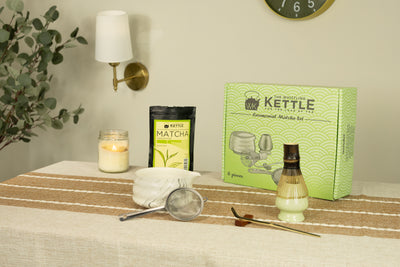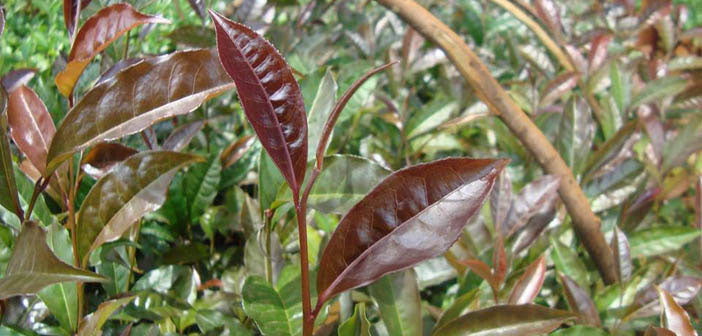
What is Purple Tea?
We are all familiar with the various tea types such as black tea, green tea, oolong and so forth. But, have you heard of purple tea? Purple tea combines the health properties of green and black tea, adds a new UNIQUE health benefit, and offers farmers a chance to increase their income. Sound to good to be true? Is there a catch? Is it going to drain your wallet?
The answer to all of the above is NO!
So what is purple tea exactly?
Purple tea, like all other tea originates from the Camellia Sinensis plant. The same plant that we get our familiar black and green tea from. The purple appearance of the tea is caused by a unique genetic mutation which produces anthocyanin, the same powerful antioxidant found in blueberries. In fact, it contains 1.5 percent compared to .1 percent for blueberries.
Is Purple Tea actually purple?
Yes, purple tea is actually purple! Due to the presence of anthocyanins, the same natural pigments found in fruits and vegetables that are blue and purple, the leaves of the tea plant produce a purple tea with a purple coloration. Once brewed, purple tea can range in color from a pale yellow to a bright pink-purple hue, depending on variables such as steeping time and temperature. This unique coloration is one of the things that sets purple tea apart from other types of tea.

Where does purple tea come from?
Modern purple tea is harvested from the Nandi Hills region in Kenya, where it thrives at high elevations (also known as pest free zones) and exposure to nearly 12 hours of sun a day. This UV exposure also promotes high EGCG content, the same type of powerful anti-oxidant found in green tea. Along with EGCG, it contains l-theanine, the amino acid only found in tea which helps to reduce anxiety and promote relaxation. It promotes calm awareness, which is the best of both worlds!
Originally wild mutations were found in small quantities in China. However a public/private partnership emerged in Kenya to isolate this mutation and mass produce Purple tea. It's grown at elevations between 4,500 and 7,500 feet, much of it from the Nandi Hills region of Kenya. This high altitude near the equator results in higher levels of UV bombardment, and causes the plants to produce very high levels of anti-oxidants to protect the leaves from damage.
Because of the high altitude, no pesticides are used on purple tea.
What are the health benefits of purple tea?
Anthocyanin has many medicinal properties and is particularly known to be beneficial against cardiovascular diseases. These anti-oxidants are known to provide anti-cancer benefits, improve vision, and aid in cholesterol and blood sugar metabolism. At the same time, caffeine content is lower than that of black tea. Purple tea also contains higher amounts of another anti-oxidant - polyphenols. More than black or most green teas (16.5 percent versus 10.1 percent for black and 9.1 for green).
Like green tea, purple tea also has high levels of another form of anti-oxidant known as catechins, especially EGCG which is the powerful anti-oxidant found in green tea. These neuro-protective antioxidants permeate the blood brain barrier, and in a study performed on mice, significantly boosted brain antioxidant capacity.
There is another secret weapon in the purple tea arsenal...NOT FOUND IN ANY OTHER TEA OR FOOD. It's a special type of polyphenol called GHG. Initial research has shown that it can decrease fat mass & thickness while increasing lean body mass. Researchers think this is caused by GHG affecting lipase, the enzyme that breaks down fats so the body can easily digest them.
Feel good about drinking it, and the farmers thank you.
Kenya produces a lot of tea, and it's their #1 cash crop. But there has been a downward trend in the prices of the staple black teas that Kenya mainly produces. It was either bite the bullet and watch income drop, or find another way...a new niche that Kenya could be market leaders. They took the chance and...
IT WORKED.
25 years after the first hybrids appeared, Kenya's farmers are starting to ramp up production for export. And the great thing is, even with the amazing health benefits provided by this tea, it only costs a few dollars more than most teas. In fact, you would think the price for purple tea would be much higher based on the unique benefits it provides. Needless to say, by purchasing purple tea you are putting your support behind the farmers who have waited 25 years to bring this tea to market.

What does Purple Tea taste like?
Purple tea has a pleasant, sweet and woodsy flavor. We use slightly less than boiling water and steeped the tea for about 3 minutes and noticed almost no astringency. Purple tea itself has a dark color, however the infusion is light, with a slight purplish hue. Some have said it has both black and green flavor characteristics. We found it to taste very much like a green tea, with no-astringency and no tannin bitterness - but it isn't grassy or vegetal.
Because of it's forgiving nature this may be a good way for people looking to increase their health to hop on the tea bandwagon.
Purple tea blends
Purple tea lends itself to blending, and can be combined with other teas to "stack up" on benefits. An example is our Trugrit tea, based on the Titanium Tea recipe from Tim Ferris.
Caffeine in Purple Tea
Because purple tea is brewed at slightly lower temperatures (below boiling), and it's not fully oxidized, the caffeine content is low, equivalent to most green teas. Because of the antioxidants however, it still goes through the blood brain barrier and helps provide you with stimulation, but not by assaulting you with very high caffeine levels.
Purchasing Purple Tea
We import Purple Tea on a regular basis, ensuring a fresh product. It is important that you look at purchasing only quality purple tea. Some vendors hide inferior quality tea in tea bags, complete with sticks, twigs or artificial flavors. We recommend only purchasing loose tea so you can see the quality.
How to Brew Purple Tea
Purple tea is pretty forgiving. Simply brew it according to the instructions provided, which usually starts with one heaping teaspoon per cup, and steep for 2-4 minutes. We recommend using water that is slightly below boiling. The longer you steep, the more flavor and distinctive pinkish color you'll reveal.
"I love this purple tea from Kenya. It's a great tea for the body. I placed my order and I had my tea within a few days. Please keep up the good work" -Felton
Purple Tea Blends
Purple Whole Leaf / Premium
This is the original pure purple tea from the Nandi Hills region of Kenya. Its purple color is a result of an antioxidant known as anthocyanin, which is also found in blueberries and red cabbage. Purple tea is processed lightly like a green tea. Sweet and mildly fruity, our Purple Tea is a hidden gem.

Purple Punch
A cup of Purple Punch is a bright tropical infusion of juicy passion fruit sweet lemongrass crisp apple and a hint of hibiscus. Full of Purple Tea super-antioxidant health benefits! This deliciously bright colored tea is fruit forward and extremely refreshing.
Ingredients
Organic Lemongrass, Kenyan Purple Tea, Hibiscus, Apple Pieces, Rosehips, Natural Passion Fruit Flavor

Sharp Mind Tea
Yerba Mate provides the raw caffeine punch, but not in overwhelming amounts. Pu-erh tea is lower in caffeine but keeps you feeling fresh. Sweet berries, banana chips, pomegranate, and mango make Sharp Mind Tea a lively infusion.
Ingredients
Mate, Purple Tea, Pu-erh Tea, Blueberries, Pomegranate Arils, Freeze-fried Whole Raspberries, Blue Cornflower Blossoms, Freeze-dried Strawberry Pieces, Blackberry Leaves, Apple Cubes, Mango Flakes, Turmeric, Banana Chips, Freeze-dried Tangerine Pieces, Marigold Blossoms, Flavoring

Trugrit Energy Tea
Based on Tim Ferris' Titanium tea recipe, our enhanced version contains 3 teas (Purple, Pu-erh, Yerba Mate) that provide an energy/brain boost over different ranges of time, keeping you motivated and productive without the caffeine crash.
Ingredients
Black Tea, Pu-erh tea, Purple Tea, Organic Green Yerba Mate, Organic Roasted Yerba Mate, Turmeric, Ginger, Cocoa Beans, Green Coffee Beans, Chamomile Petals, Ground Coffee, Natural Flavors










